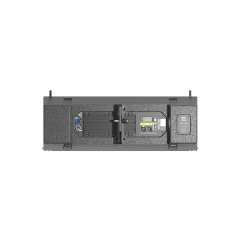The pro audio scene has seen all kinds of leaps and bounds in advancement as well trends which lay out the groundwork for what lies ahead with regards sound technology. A major trend in this regard is the rapidly rising incorporation of digital mixing consoles. The growth rate for these consoles is around 7% y-o-y, due to the fact that a higher number of functions are integrated in one single device and complete integration helps sound engineer’s efficiency and control. Digital consoles have become more popular because of the flexibility they allow — it’s easy to jump between mixing in different places or for different types events, and its pure convenience. Storing settings can be a lifesaver too, particularly on a touring production rub by volunteers.println (>>)
Another major trend is the growth of wireless audio systems. As 5G technology enters the market, wireless pro audio equipment is becoming more stable with lower latency and a greater bandwidth. This has corresponded to a 15% rise in use of wireless microphones and ear-monitors at live music events. Making use of these systems is essential for maintaining a consistent audio experience in large venues and complicated stage layouts, thanks to the improved frequency stability as well as extended range.
High-resolution audio has skyrocketed in popularity as consumers and professionals look for the highest quality sound. Equipment that is high-resolution audio capable and can stream music at rates in excess of 96 kHz have managed to achieve a premium for very much the same reasons as smartphone cameras with higher resolutions, dealers said. Overall, this trend also fits within the broader industry shift towards offering as accurate and clear sound quality as possible to appeal for audiophiles or professional sound engineers that have highest quest for perfect fideltiy.

Sustainability is now a main driver in the design and construction of pro audio gear. Obviously, companies are more concerned about such problems than ever before with some brands claiming a 20 percent reduction in energy consumption for their newest line of amplifiers. It is no lie that the application of recycling and energy-efficient technologies in audio equipment serves as an answer to consumer requests, but we also see a genuine approach from manufacturers who are moving towards responsible corporate citizenship.
Speakers are certainly moving towards more compact and powerful line array systems. These arrays have the advantages of high sound pressure level (SPL) in a compact size, which makes them suitable for smaller [2] on-stage spaces. Their exceptional performance, which produces SPLs exceeding 130 dB without noticeable distortion, has helped students select these systems for indoor as well as outdoor events.
One of the newer developments in pro audio equipment is associated with artificial intelligence (AI). Making use of AI in processors would allow for real-time optimization of sound based on the acoustic profile, adjusting EQ settings or compression etc. as per required by the venue characteristics. It would be very useful in live sound applications where the environment is constantly changing. As more and more pros realize the benefits of automated audio optimization, AI-driven tools for this market is anticipated to skyrocket by a very respectable compound annual growth rate (CAGR) over the next five years at 12%.
Pro audio pros need to stay informed on trends like this. The combination of forward-thinking developments in digital technology, wireless systems and high-resolution audio to sustainability-enabled compact speaker design perfectly complements the increased integration with artificial intelligence that forms a catalyst for where sound is heading next.